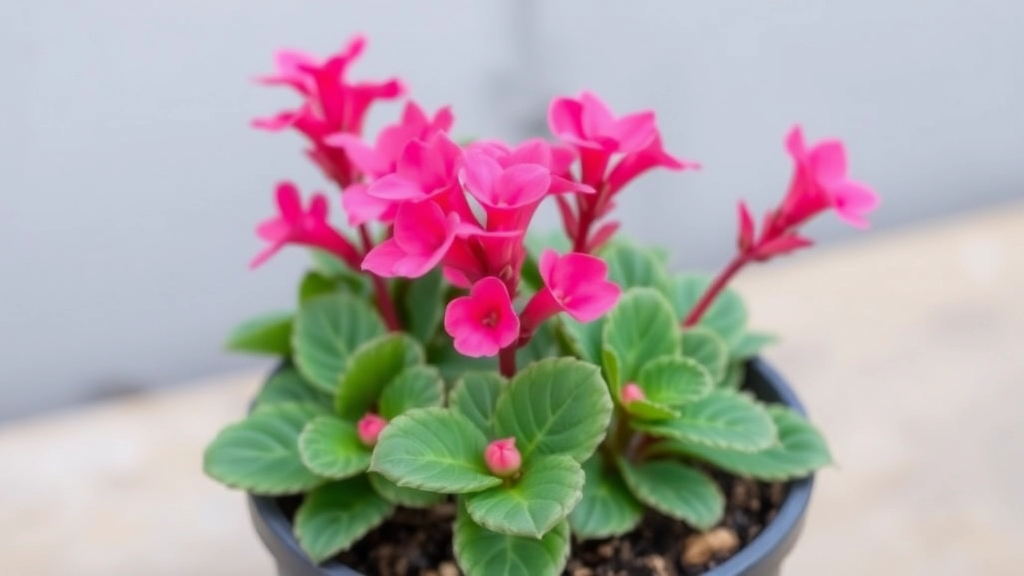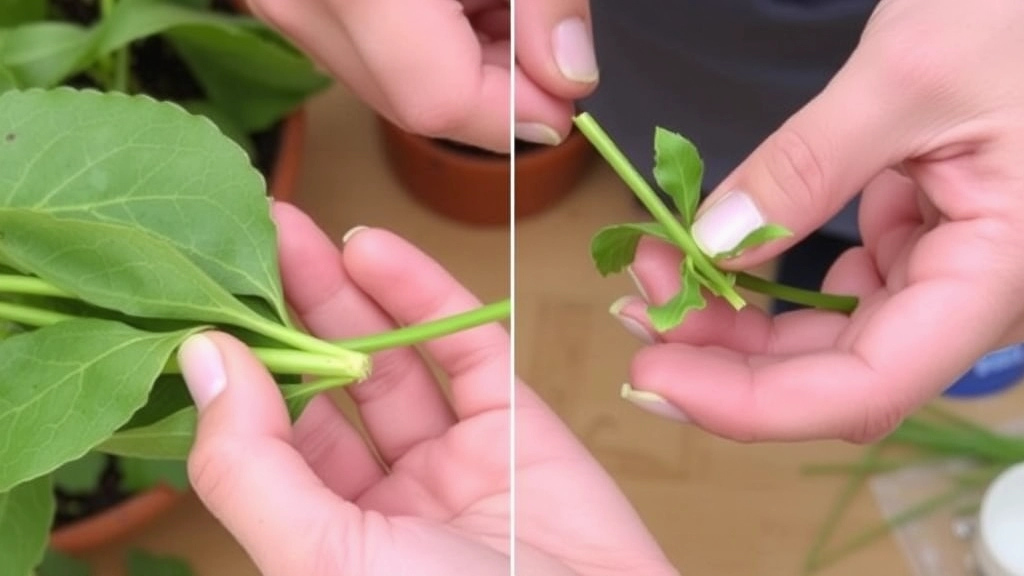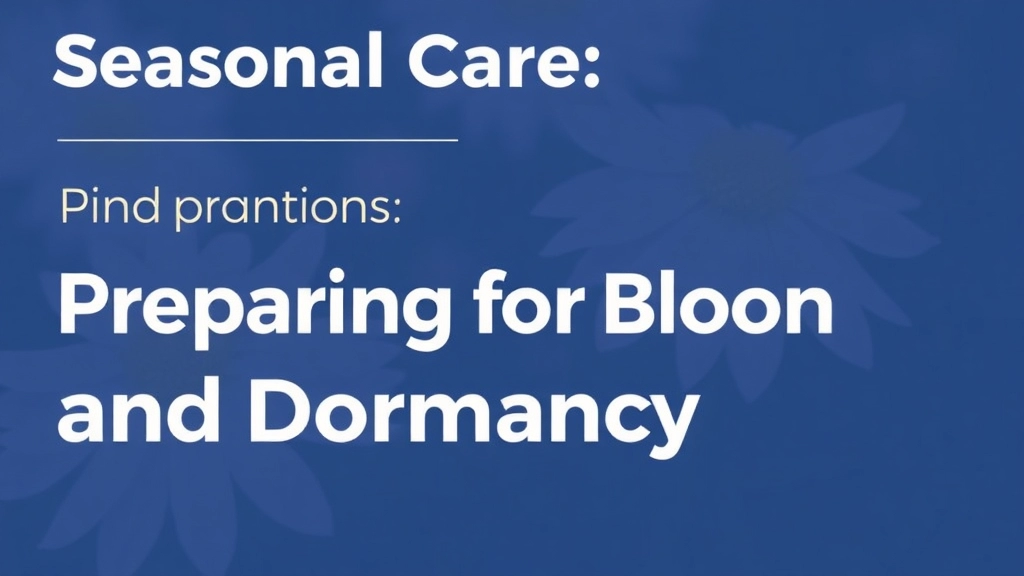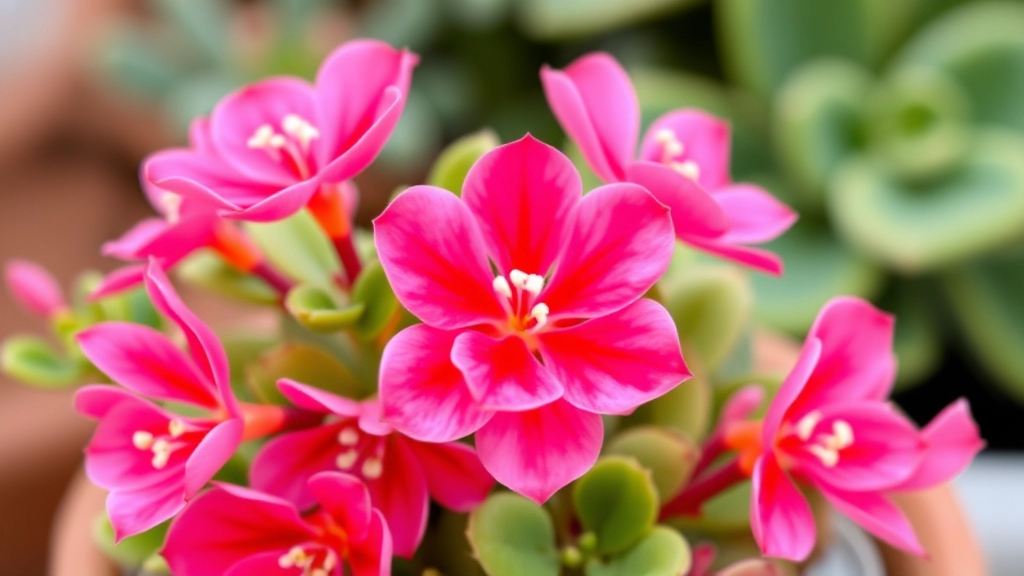Discover the Pink Kalanchoe Succulent
Discover the vibrant world of the Pink Kalanchoe Succulent, often known as ‘Pink Butterflies.’ This stunning plant not only adds a splash of colour to your home but is also relatively easy to care for. Whether you’re a seasoned gardener or a succulent newbie, understanding the key features and optimal growing conditions of the Pink Kalanchoe will help you keep your plant thriving.
Growing Conditions
When it comes to growing a Pink Kalanchoe Succulent, the right balance of light, water, and soil is crucial. These succulents prefer bright, indirect sunlight and well-draining soil to prevent root rot. Watering should be done sparingly, allowing the soil to dry out between waterings.
Propagation
For those interested in propagation, leaf and stem cuttings are effective methods to expand your collection. Stay tuned as we dive deeper into each aspect to ensure your Pink Kalanchoe flourishes.
Key Features of the Pink Kalanchoe Succulent
Are you drawn to the vibrant hues of the Pink Kalanchoe succulent but unsure what makes it so special?
This charming plant is not just a feast for the eyes; it has a variety of unique characteristics that make it a favourite among succulent enthusiasts.
Optimal Growing Conditions for Pink Kalanchoe

So, you’ve got your Pink Kalanchoe and you’re excited to see it thrive. But what does it really need to flourish? Let’s dive into the optimal growing conditions that will keep your succulent looking vibrant and healthy.
Light Requirements
First off, light is key for your Kalanchoe.
- Bright, Indirect Sunlight: It loves bright light but can get a bit cranky with too much direct sun.
- South or West-facing Windows: These spots are usually the best for your plant.
Temperature and Humidity
Next up is temperature.
- Ideal Range: Aim for a cozy 20-25°C (68-77°F) during the day and a bit cooler at night.
- Avoid Frost: These succulents aren’t fans of frost, so keep them indoors if you live in a chilly area.
Air Circulation
Don’t forget about air!
- Good Ventilation: Ensure your plant has decent airflow around it. This helps prevent mold and pests.
Fertilization
Lastly, a little boost goes a long way.
- Fertilize Sparingly: Use a balanced, diluted fertiliser during the growing season (spring and summer) about once a month.
Watering and Soil Requirements for Healthy Growth
When it comes to nurturing your Pink Kalanchoe, understanding its watering and soil needs is crucial. Many plant enthusiasts often wonder: How much should I water my Kalanchoe? What type of soil is best for its growth?
Propagation Techniques: Leaf and Stem Cuttings

When it comes to expanding your Pink Kalanchoe collection, propagation is a rewarding venture. Many enthusiasts wonder how to effectively propagate their succulents without much fuss.
Leaf Cuttings: A Simple Method
- Select a Healthy Leaf:
- Choose a plump, healthy leaf from the parent plant.
- Ensure it’s free from any damage or pests.
- Cut and Dry:
- Use a clean, sharp knife or scissors to cut the leaf.
- Allow the leaf to dry for 2-3 days until the cut end calluses over.
- Planting:
- Place the dried leaf on well-draining soil.
- Lightly mist the soil to provide moisture without soaking it.
- Light and Patience:
- Position the cutting in bright, indirect sunlight.
- Be patient; roots will develop in a few weeks.
Stem Cuttings: A More Robust Approach
- Choose a Healthy Stem:
- Look for a healthy stem with several leaves.
- Make the Cut:
- Cut a section of the stem about 3-4 inches long.
- Ensure the cut is clean and at a node where leaves emerge.
- Drying:
- Allow the cut end to dry for a few days to form a callus.
- Planting:
- Insert the stem cutting into well-draining soil.
- Water lightly and place in indirect sunlight.
- Encouraging Growth:
- Keep the soil slightly moist but not soggy.
- New growth should appear within a few weeks.
Propagation not only allows you to grow more plants but also gives you the joy of nurturing new life.
Common Pests and How to Prevent Them
As you nurture your Pink Kalanchoe, it’s essential to be aware of potential pests that could disrupt its growth.
Common Pests:
- Mealybugs: These tiny, white, cotton-like bugs can often be found hiding in the leaf axils and on stems.
- Spider Mites: These pests thrive in dry conditions and can create fine webbing on your plant.
- Aphids: Small, green insects that tend to cluster on new growth, sucking sap and causing leaves to curl.
- Scale Insects: These appear as small, brown bumps on stems and leaves, robbing your plant of nutrients.
Prevention Strategies:
- Regular Inspections: Check your plant weekly for early signs of infestation.
- Clean Leaves: Wipe leaves with a damp cloth to remove dust and potential pests.
- Neem Oil: Apply diluted neem oil as a natural pesticide. It disrupts the life cycle of pests without harming the plant.
- Insecticidal Soap: Use this to target soft-bodied insects like aphids and mealybugs effectively.
Environmental Control:
- Humidity: Maintain moderate humidity levels; too dry can attract spider mites.
- Airflow: Ensure good airflow around your plant to deter infestations.
By keeping a close eye on your Pink Kalanchoe and employing these preventive measures, you can enjoy a healthy, vibrant plant. For more detailed care tips, visit our guide on caring for pink Kalanchoe flowers. Additionally, if you’re interested in expanding your collection, check out our selection of Kalanchoe succulents for sale.
Seasonal Care: Preparing for Bloom and Dormancy

So, you’ve got your Pink Kalanchoe thriving, and now you’re wondering how to keep it in tip-top shape through the seasons.
Blooming Season: Get Ready for a Show!
When it’s time for your Kalanchoe to bloom, usually in late winter to early spring, it’s all about making the most of this vibrant display.
- Light: Ensure it gets plenty of bright, indirect sunlight. This helps those gorgeous flowers pop.
- Fertiliser: A balanced, water-soluble fertiliser can give it a boost. Think every couple of weeks during the growing season.
- Temperature: Keep it cozy! Ideal temps are around 18-24°C (65-75°F).
Dormancy: A Time to Rest
Once the blooms fade, your Kalanchoe will enter its dormancy phase, typically in late summer. It’s crucial to adjust your care routine here.
- Watering: Cut back on watering—let the soil dry out between drinks. Overwatering can lead to root rot, and nobody wants that!
- Light: It still needs light, but you can reduce the intensity a bit. A spot with indirect sunlight is perfect.
- Temperature: Keep it in a cooler spot, around 15-20°C (60-68°F), to encourage rest.
Why Seasonal Care Matters
Understanding these seasonal changes can make a world of difference. You’ll not only enjoy stunning blooms but also keep your plant healthy and happy.
Selecting the Right Pots and Repotting Tips
When it comes to ensuring your Pink Kalanchoe thrives, choosing the right pot is just as important as the care you provide.
Why Pot Selection Matters
A suitable pot not only enhances the aesthetic of your plant but also promotes healthy growth. The right pot will allow for proper drainage, which is crucial for succulents like the Pink Kalanchoe.
Key Considerations for Pot Selection
- Material: Terracotta pots are excellent for succulents as they are porous, allowing moisture to evaporate. Plastic pots retain moisture longer but may require extra attention to drainage.
- Size: Choose a pot that is slightly larger than the current root ball. Too much space can lead to overwatering issues, while too small can restrict growth.
- Drainage Holes: Ensure your pot has adequate drainage holes to prevent water accumulation. This is vital for the health of your Pink Kalanchoe.
Repotting Tips
Repotting is essential for maintaining the health of your succulent. Here’s how to do it effectively:
- Timing: The best time to repot is during the spring or early summer, when the plant is actively growing.
- Soil: Use a well-draining succulent mix. You can create your own by mixing potting soil with sand or perlite.
- Gentle Handling: Carefully remove the plant from its old pot. Shake off excess soil but avoid damaging the roots.
- Placement: Position the plant in the new pot, ensuring it sits at the same depth as before. Fill in with fresh soil and gently pat down.
- Watering: After repotting, wait a week before watering to allow any root damage to heal.
By taking these steps, you’ll create a thriving environment for your Pink Kalanchoe. For more detailed information, check out our complete guide to growing and caring for Kalanchoe Pink Butterflies and care guide for Yellow Florist Kalanchoe Blossfeldiana.
FAQs about Pink Kalanchoe Succulents
What are the light requirements for a Pink Kalanchoe?
Pink Kalanchoe thrives in bright, indirect sunlight. Placing it near south or west-facing windows is ideal. Too much direct sunlight can cause stress to the plant.
What is the ideal temperature range for Pink Kalanchoe?
The optimal temperature for Pink Kalanchoe is between 20-25°C (68-77°F) during the day and slightly cooler at night. It is crucial to avoid exposing the plant to frost.
How important is air circulation for Pink Kalanchoe?
Good ventilation is essential for Pink Kalanchoe to prevent mold and pests. Ensure there is decent airflow around the plant.
How often should I fertilize my Pink Kalanchoe?
Fertilize your Pink Kalanchoe sparingly, using a balanced, diluted fertilizer once a month during the growing season (spring and summer).
What are the steps for propagating Pink Kalanchoe using leaf cuttings?
To propagate using leaf cuttings:
- Select a healthy, plump leaf free from damage or pests.
- Cut the leaf with a clean, sharp knife and let it dry for 2-3 days until the cut end calluses over.
- Place the dried leaf on well-draining soil and lightly mist it.
- Position the cutting in bright, indirect sunlight and be patient as roots develop in a few weeks.
How do I propagate Pink Kalanchoe using stem cuttings?
To propagate using stem cuttings:
- Choose a healthy stem with several leaves.
- Cut a 3-4 inch section of the stem at a node where leaves emerge.
- Allow the cut end to dry for a few days to form a callus.
- Insert the stem cutting into well-draining soil, water lightly, and place in indirect sunlight.
- Keep the soil slightly moist and new growth should appear within a few weeks.
How should I care for my Pink Kalanchoe during its blooming season?
During the blooming season (late winter to early spring):
- Ensure it gets plenty of bright, indirect sunlight.
- Use a balanced, water-soluble fertilizer every couple of weeks.
- Maintain ideal temperatures around 18-24°C (65-75°F).
What changes should I make to care for my Pink Kalanchoe during dormancy?
During dormancy (late summer):
- Reduce watering, allowing the soil to dry out between waterings.
- Provide indirect sunlight but reduce the intensity.
- Keep the plant in a cooler spot, around 15-20°C (60-68°F).
Why is seasonal care important for Pink Kalanchoe?
Understanding and adapting to seasonal changes ensures your Pink Kalanchoe remains healthy and vibrant, allowing you to enjoy its stunning blooms and overall well-being.
References
-
How to Care for a Kalanchoe Plant
-
Growing Kalanchoe Succulents Indoors
-
Kalanchoe: How to Grow and Care for Kalanchoe Plants
